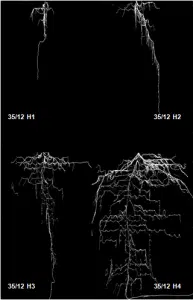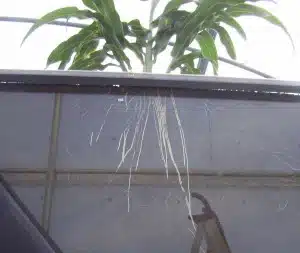
Recent discoveries by a University of Queensland agricultural scientist provide the basis for custom designing plant roots. Her discovery is already being used by plant breeders to develop drought-resistant sorghum crops.
The shape of the root system plays an important role in sorghum’s capacity to absorb water. Dr Vijaya Singh has demonstrated this is governed largely by a region of the plant genome that she has located. Her findings and techniques could well be transferrable to other crop plants.
“Improving efficiency of water use in field crops is a global imperative for food security,” Vijaya says.
Sorghum is an important dryland cereal crop, which is grown in parts of the developing world where drought is common, and also in north-eastern Australia. “Despite the fact that root systems are critical to water capture by plants and to drought adaptation, little attention has been paid to them because they are so difficult to study,” Vijaya says
So, she developed a technique of growing sorghum seedlings in narrow transparent Perspex containers and then scanning them to measure their root characteristics. What she found was that the angle at which seedling roots strike out from their first branch point underground indicates the shape and function of the root system of the mature plant.
And this “nodal root angle” is under genetic control. “I used this discovery to locate the controlling genetic regions,” she says.
“My results showed that strains with a wide nodal root angle at the seedling stage had a tendency to gather a greater proportion of their water at a distance, due to the broader spatial pattern of their root systems. Conversely, strains with a narrow nodal root angle had a greater capacity to extract water from depth immediately below the plant. This understanding will make it easier to design varieties better adapted to drought stress.”
Vijaya’s identification of the regions of the genome related to root system shape presents opportunities for improving drought adaptation through breeding. “This could provide farmers with better grain yields, particularly in extreme drought years,” she says. “Ultimately, this would help to stabilise farm income, which could improve the social and economic structures of rural communities.”
Vijaya Singh is one of 16 winners of Fresh Science, a national competition for early-career scientists who are unveiling their research to the public for the first time. Her training and challenges have included presenting her discoveries in verse at a Melbourne pub, and to schools in Melbourne and country Victoria.
- For interviews contact Vijaya Singh on v.singh@uq.edu.au
- For UQ contact Jan King on j.king@uq.edu.au
- For Fresh Science contact AJ Epstein on 0433 339 141 or Niall Byrne on 0417 131 977 or niall@scienceinpublic.com.au, photos available at www.freshscience.org









 Fresh Science is on hold for 2022. We will be back in 2023.
Fresh Science is on hold for 2022. We will be back in 2023.